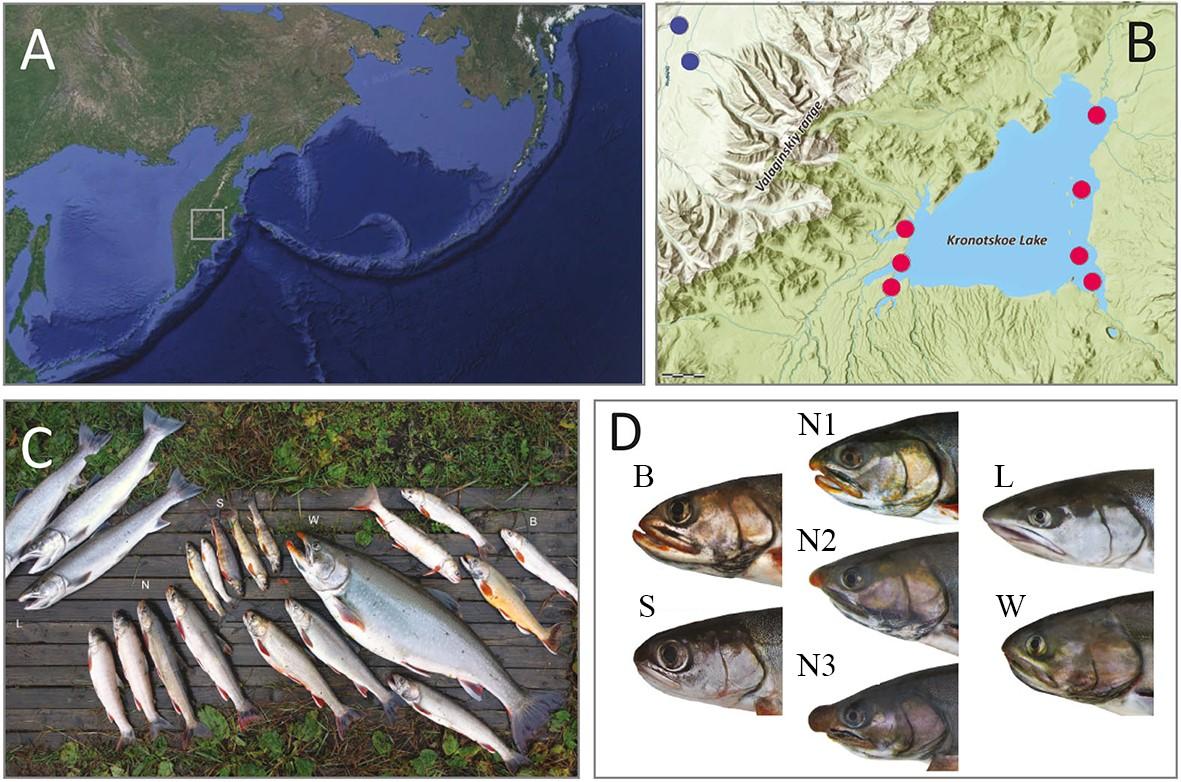
Freshwater bodies occupy less than one percent of the Earth's surface and constitute only 0.02% of accessible aquatic habitats. Despite this, about 15,000 fish species live in freshwater, which is 40% of the total species diversity of modern ichthyofauna. One of the mechanisms for the formation of modern freshwater fish diversity is adaptive radiation, which leads to the formation of bundles (complexes) of phenotypically and ecologically distinct morphs or species. The most famous are the sympatric complexes of cichlid fish inhabiting large lakes in Africa, as well as many repeated cases of radiation of the three-spined stickleback. However, many other taxa of freshwater fish can also boast, although not as rich in the number of forms as cichlids, and not as frequently and stereotypically repeated as stickleback, but no less interesting examples of adaptive radiation.
Thus, the relatively young Kronotskoye Lake (Kamchatka Peninsula), formed as a result of lava flows that blocked the main channel of the Paleo-Kronotskaya River about 12,000 years ago, is home to the richest morph-rich cluster of salmon fish (Salmonidae) (Fig. 1). It includes at least ten reproductively isolated, morphologically and ecologically distinct morphs of chars that formed as a result of rapid adaptive radiation of a population of anadromous Dolly Varden Salvelinus malma trapped in the lake. This case of rapid evolutionary transformations has long attracted the attention of Russian researchers, including employees of the A.N. Severtsov Institute of Ecology and Evolution of the Russian Academy of Sciences (IEE RAS), and the data obtained during its study have made a significant contribution to understanding the processes and factors that ensure adaptive radiation of fish. However, a number of key questions concerning the origins of this bundle, as well as the genetic changes accompanying the formation of its morphological and ecological diversity, remained open.
The analysis of the conservative part of the genome of seven ecomorphs of Kronotsky char, conducted by the staff of the Institute of Ecology and Evolution of the Russian Academy of Sciences together with their American colleagues, made it possible to answer some of the questions. In particular, the monophyletic origin of the bundle was established and the scenario of its diversification was reconstructed: division into three independently diverging lines. A high degree of reproductive isolation of the ecomorphs was confirmed. Genetic features that distinguish lake forms of char from anadromous Dolly Varden were established. In addition, genetic evidence was obtained that the leading role in the formation of the ecological and phenotypic diversity of Kronotsky char was played by selection for traits associated with the development of cranial bones, energy metabolism and the activity of the hypothalamic-pituitary-thyroid axis, and the main ontogenetic mechanism for the formation of diversity is heterochrony - changes in the timing and rate of ontogenetic processes. The obtained data significantly enriched our knowledge of genetic processes, physiological, ontogenetic and morphological changes occurring during rapid adaptive radiation of fish and laid a good foundation for the development of such studies.
The results of the work are published in a special issue of the journal Development: Uncovering Developmental Diversity: Katherine C. Woronowicz, Evgeny V. Esin, Grigorii N. Markevich, Crisvely Soto Martinez, Sarah K. McMenamin, Jacob M. Daane, Matthew P. Harris, Fedor N. Shkil; Phylogenomic analysis of the Lake Kronotskoe species flock of Dolly Varden charr reveals genetic and developmental signatures of sympatric radiation. Development 15 October 2024; 151 (20): dev203002.
Related materials:
